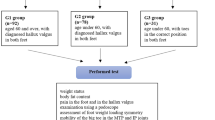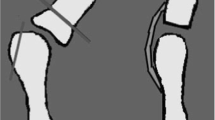Summary
The normal characteristics of the hallux sesamoid bones were studied in 200 toes (100 dissections and 100 radiographs from patients with hallux valgus), and pathological changes were recorded. Normally each sesamoid articulated with a separate groove on the plantar surface of the first metatarsal head. A bony ridge on the head separated these grooves.
Bipartite sesamoids were found in 4% of the toes. Osteoarthritic changes manifested by deformity, irregularity, lipping, cysts in the sesamoids and in the heads of the first metatarsal and erosions in the articular surfaces were present in 32% of the dissected toes. Fusion of the sesamoids was found in 6%. Ankylosis between the sesamoids and the head of the metatarsal was observed in 4%.
In the toes affected by hallux valgus the sesamoids, together with the plantar pad and the tendon of the flexor hallucis brevis, were displaced laterally to a variable degree. In severe deformities the lateral sesamoid was dislocated lateral to the first metatarsal head and the medial sesamoid occupied the groove originally corresponding to the lateral sesamoid, while the metatarsal ridge separating the two sesamoids tended to disappear. Osteoarthritis of the metatarsophalangeal joint frequently accompanied hallux valgus.
Similar content being viewed by others
References
Boyer, cited by Inge and Ferguson (Ref. 6)
Du Vries H (1978) Surgery of the Foot, 4 ed, C V Mosby, Saint-Louis
Gillette, cited by Inge and Ferguson (Ref. 6)
Haines, RW, McDougall A (1954) The anatomy of Hallux Valgus. J Bone Joint Surg 36B: 272–293
Helal B (1981) The great toe sesamoid bones: The lus or lost souls of Ushaia. Clin Orthop, 157: 82–87
Inge GAL, Ferguson A B (1933) Surgery of the sesamoid bones of the great toe. Arch Surg 27: 466–488
Inge GAL (1936) Congenital absence of the medial sesamoid of the great toe. J Bone Joint Surg 18: 188
Jahss MH (1981) The sesamoids of the hallux. Clin Orthop 157: 88–97
Morris C (1977) Sesamoiditis of the large toe. Orthopaedia Proceedings of the Orthopaedic Department, University of the Witwatersrand, Johannesburg, pp 6–7
Nesbitt R cited by Inge and Ferguson (Ref. 6)
Rosenbaum de Britto S (1982) The first metatarso-sesamoid joint. Int Orthop 6: 61–67
Scranton PE (1980) Anatomic variations in the first ray. Part II: Disorders of the sesamoids. Clin Orthop 151: 256–264
Vranes R (1976) Hallux sesamoids: A divided issue. J Podiatry Assoc 66: 687–697
Author information
Authors and Affiliations
Rights and permissions
About this article
Cite this article
Aseyo, D., Nathan, H. Hallux sesamoid bones. Anatomical observations with special reference to osteoarthritis and hallux valgus. International Orthopaedics 8, 67–73 (1984). https://doi.org/10.1007/BF00267743
Issue Date:
DOI: https://doi.org/10.1007/BF00267743




